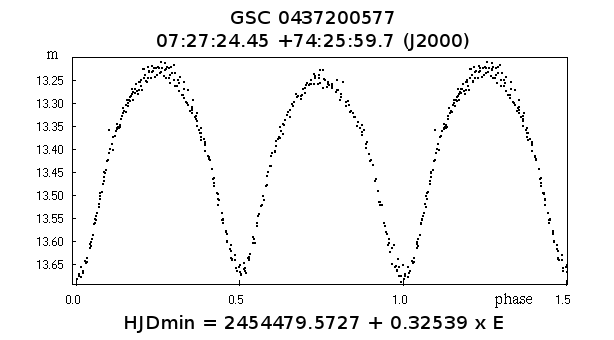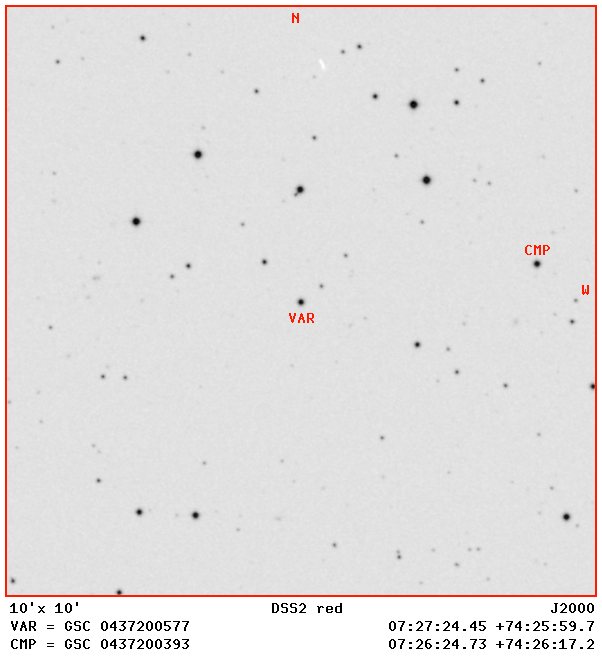"Peremennye Zvezdy",
Prilozhenie,
vol. 8, N 20 (2008)
Prilozhenie,
vol. 8, N 20 (2008)
New Eclipsing Binary Star GSC 04372-00577
T. Kryachko#1, K. V. Sokolovsky#2,3, D. Denisenko#4, B. Satovskiy#1
#1. Astrotel Observatory, Karachay-Cherkessia, Russia;
#2. Max Planck Institute for Radio Astronomy, Bonn, Germany;
#3. Astro Space Center, Lebedev Physical Institute, Russian Academy of Sciences,
Moscow, Russia;
#4. Space Research Institute (IKI), Russian Academy of Sciences, Moscow, Russia
#2. Max Planck Institute for Radio Astronomy, Bonn, Germany;
#3. Astro Space Center, Lebedev Physical Institute, Russian Academy of Sciences, Moscow, Russia;
#4. Space Research Institute (IKI), Russian Academy of Sciences, Moscow, Russia
Received: 3.05.2008; accepted: 13.05.2008
(E-mail for contact: ksokolov@mpifr-bonn.mpg.de)
| ||||||||||||||||||||||
Remarks: |
| We report the discovery of a new W UMa type eclipsing binary star GSC 04372-00577.
The observations were performed with the Astrotel-Caucasus robotic telescope (D
= 300 mm,
F = 2310 mm) equipped with an unfiltered STL-11000M CCD camera. We searched for variable
stars on the base of VaST software (http://saistud.sai.msu.ru/vast/).
Unfiltered magnitudes were calibrated using a nearby comparison star
GSC 04372-00393 ( = USNO-B1.0 1644-0054512, 07:26:24.73, +74:26:17.2 [J2000]; R1
=
13.15, R2 = 13.27),
assuming R_comp = 13.21.
The primary minimum is about 0.01 mag deeper than the secondary one. The maximum that follows the secondary minimum is by 0.02 mag fainter than that following the primary minimum (positive O'Connell effect). The 2MASS infrared colors J = 12.295 (+/-0.020), H = 12.007 (+/-0.023), and Ks = 11.935 (+/-0.022) suggest an early G spectral type (Bessell & Brett, 1988). We can use single-epoch 2MASS data to guess the spectral type since J, H, and K magnitudes were measured simultaneously and eclipses in W UMa type systems are often colorless. Acknowledgments. The authors are grateful to Dr. V.P. Goranskij for providing us with the period analysis software. This research has made use of the Aladin interactive sky atlas, operated at CDS, Strasbourg, France; the International Variable Star Index (VSX) operated by the AAVSO; and data products from the Two Micron All Sky Survey, which is a joint project of the University of Massachusetts and the Infrared Processing and Analysis Center/California Institute of Technology, funded by the National Aeronautics and Space Administration and the National Science Foundation. K. Sokolovsky was supported by the International Max Planck Research School (IMPRS) for Radio and Infrared Astronomy. |
| References: |
| Bessell M. S., Brett J. M., 1988, PASP, 100, 1134 |
Light Curve
Finding Chart 
Data Source |